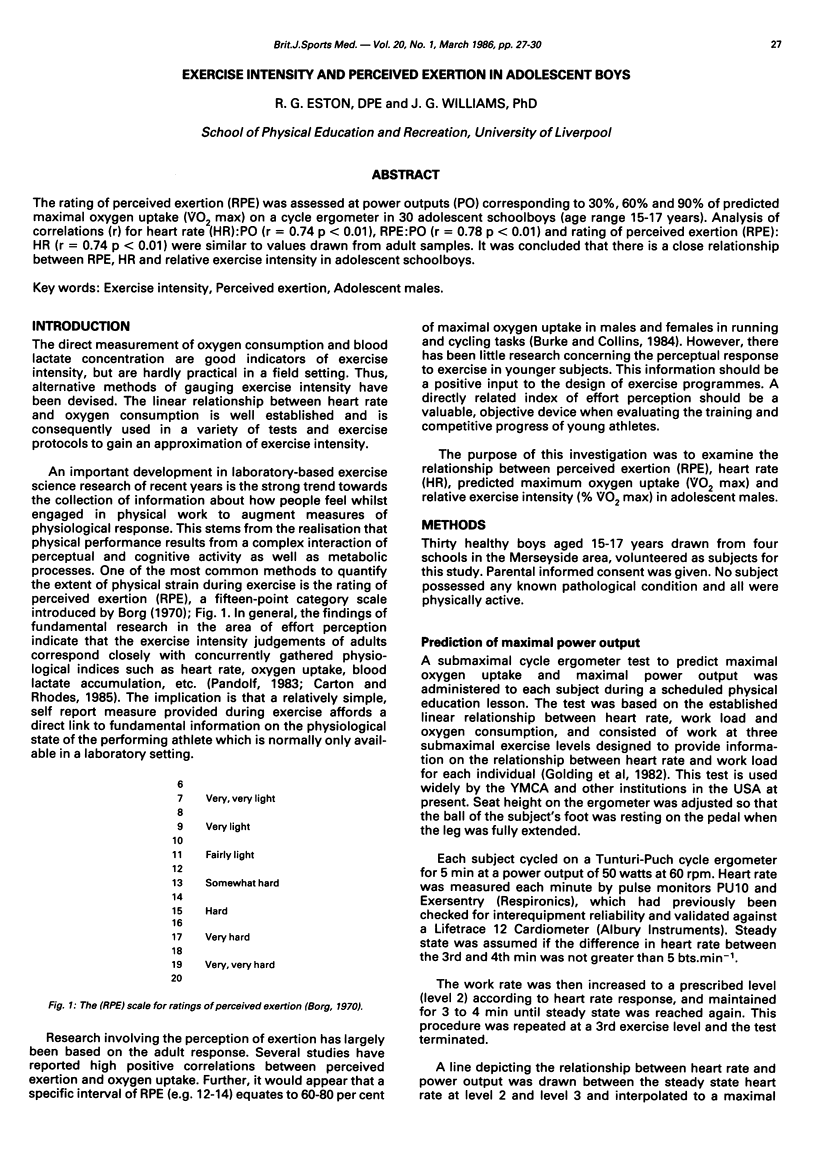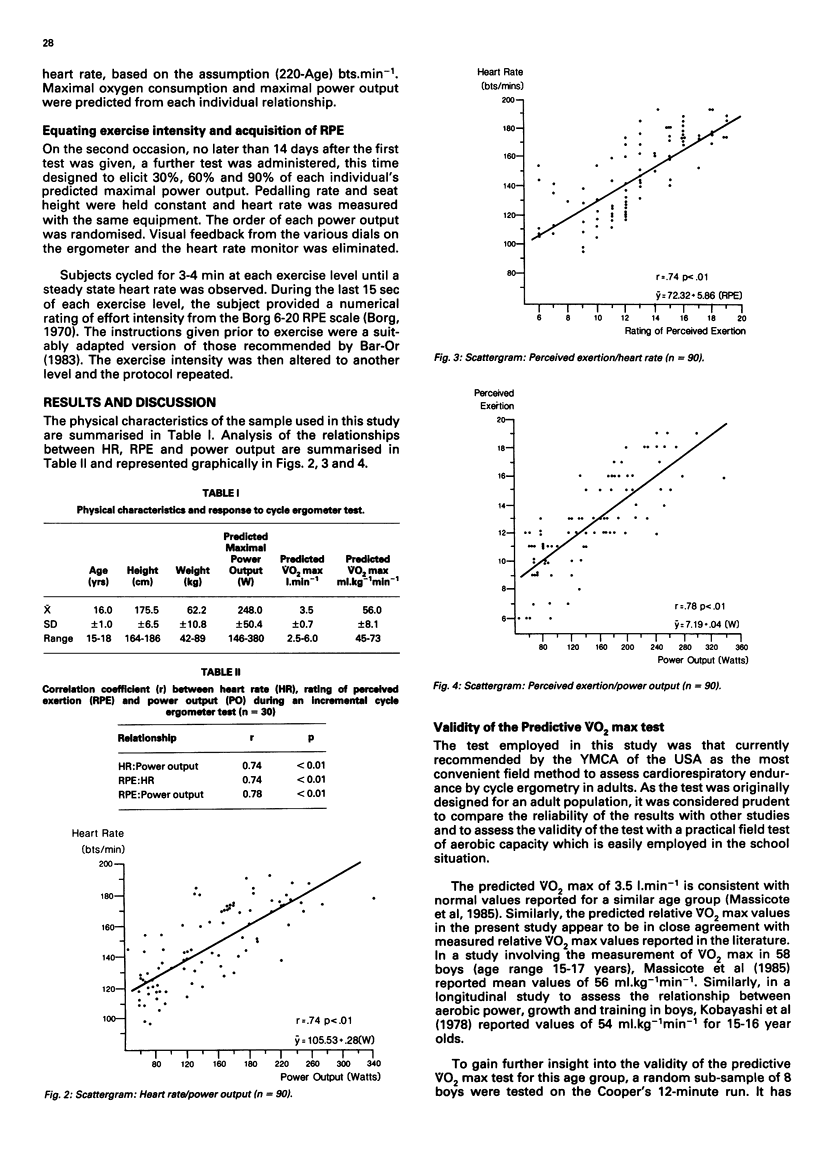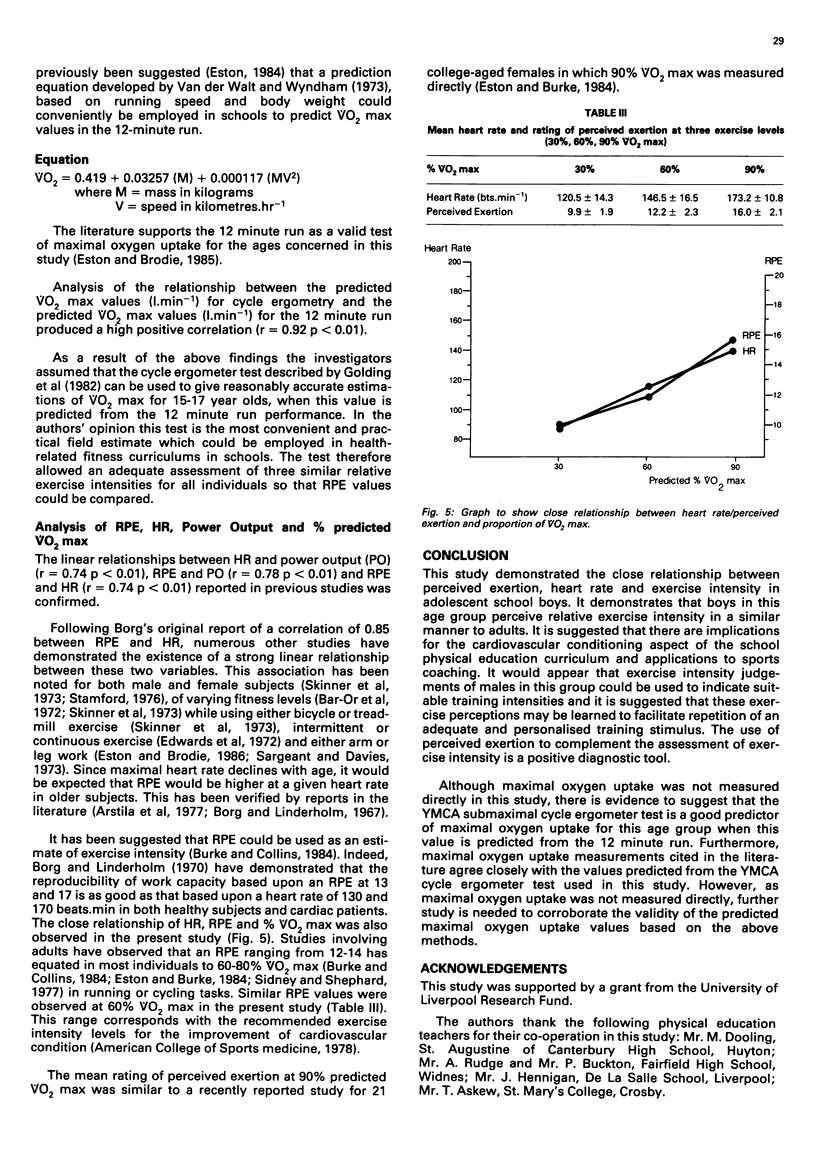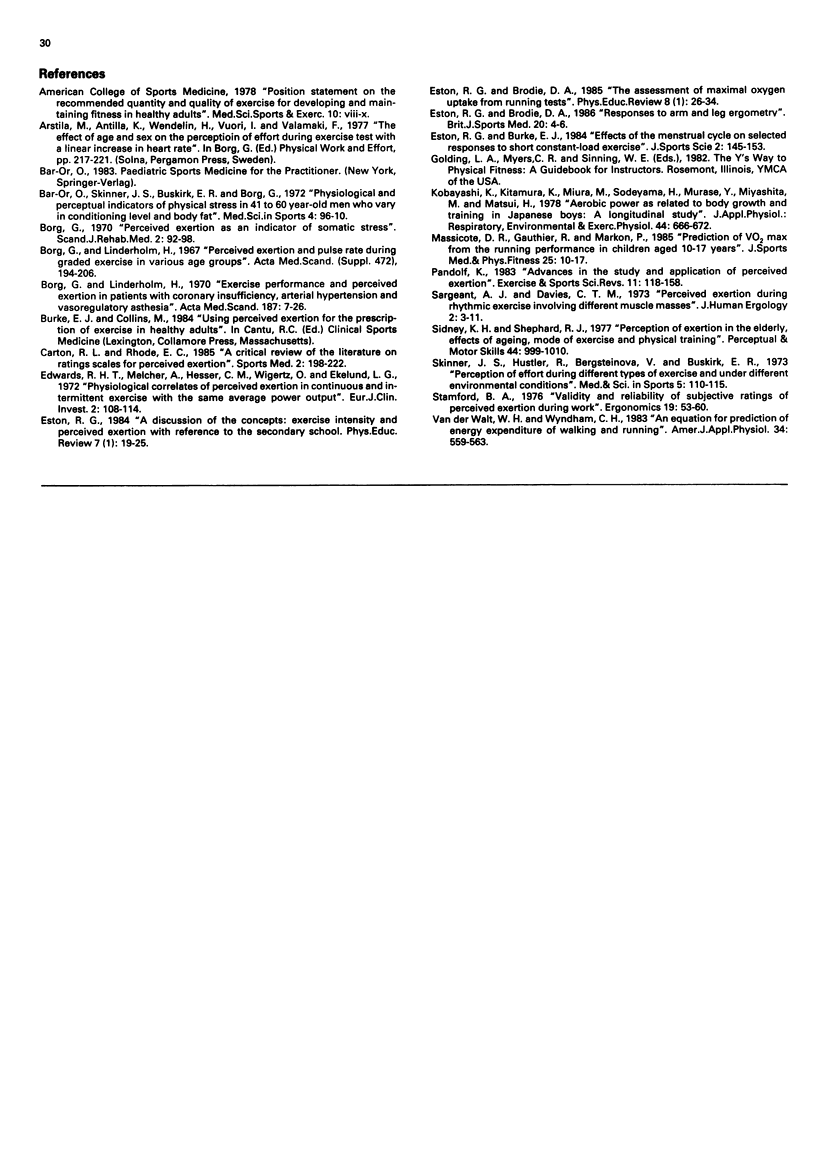Abstract
The rating of perceived exertion (RPE) was assessed at power outputs (PO) corresponding to 30%, 60% and 90% of predicted maximal oxygen uptake (VO2 max) on a cycle ergometer in 30 adolescent schoolboys (age range 15-17 years). Analysis of correlations (r) for heart rate (HR):PO (r = 0.74 p less than 0.01) and rating of perceived exertion (RPE): HR (r = 0.74 p less than 0.01) were similar to values drawn from adult samples. It was concluded that there is a close relationship between RPE, HR and relative exercise intensity in adolescent schoolboys.
Full text
PDF



Selected References
These references are in PubMed. This may not be the complete list of references from this article.
- Borg G. Perceived exertion as an indicator of somatic stress. Scand J Rehabil Med. 1970;2(2):92–98. [PubMed] [Google Scholar]
- Carton R. L., Rhodes E. C. A critical review of the literature on ratings scales for perceived exertion. Sports Med. 1985 May-Jun;2(3):198–222. doi: 10.2165/00007256-198502030-00004. [DOI] [PubMed] [Google Scholar]
- Edwards R. H., Melcher A., Hesser C. M., Wigertz O., Ekelund L. G. Physiological correlates of perceived exertion in continuous and intermittent exercise with the same average power output. Eur J Clin Invest. 1972 Jan;2(2):108–114. doi: 10.1111/j.1365-2362.1972.tb00578.x. [DOI] [PubMed] [Google Scholar]
- Kobayashi K., Kitamura K., Miura M., Sodeyama H., Murase Y., Miyashita M., Matsui H. Aerobic power as related to body growth and training in Japanese boys: a longitudinal study. J Appl Physiol Respir Environ Exerc Physiol. 1978 May;44(5):666–672. doi: 10.1152/jappl.1978.44.5.666. [DOI] [PubMed] [Google Scholar]
- Massicotte D. R., Gauthier R., Markon P. Prediction of VO2max from the running performance in children aged 10-17 years. J Sports Med Phys Fitness. 1985 Mar-Jun;25(1-2):10–17. [PubMed] [Google Scholar]
- Pandolf K. B. Advances in the study and application of perceived exertion. Exerc Sport Sci Rev. 1983;11:118–158. [PubMed] [Google Scholar]
- Sargeant A. J., Davies C. T. Perceived exertion during rhythmic exercise involving different muscle masses. J Hum Ergol (Tokyo) 1973 Sep;2(1):3–11. [PubMed] [Google Scholar]
- Sidney K. H., Shephard R. J. Perception of exertion in the elderly, effects of aging, mode of exercise and physical training. Percept Mot Skills. 1977 Jun;44(3 Pt 1):999–1010. doi: 10.2466/pms.1977.44.3.999. [DOI] [PubMed] [Google Scholar]
- Skinner J. S., Hutsler R., Bergsteinová V., Buskirk E. R. Perception of effort during different types of exercise and under different environmental conditions. Med Sci Sports. 1973 Summer;5(2):110–115. [PubMed] [Google Scholar]
- van der Walt W. H., Wyndham C. H. An equation for prediction of energy expenditure of walking and running. J Appl Physiol. 1973 May;34(5):559–563. doi: 10.1152/jappl.1973.34.5.559. [DOI] [PubMed] [Google Scholar]


